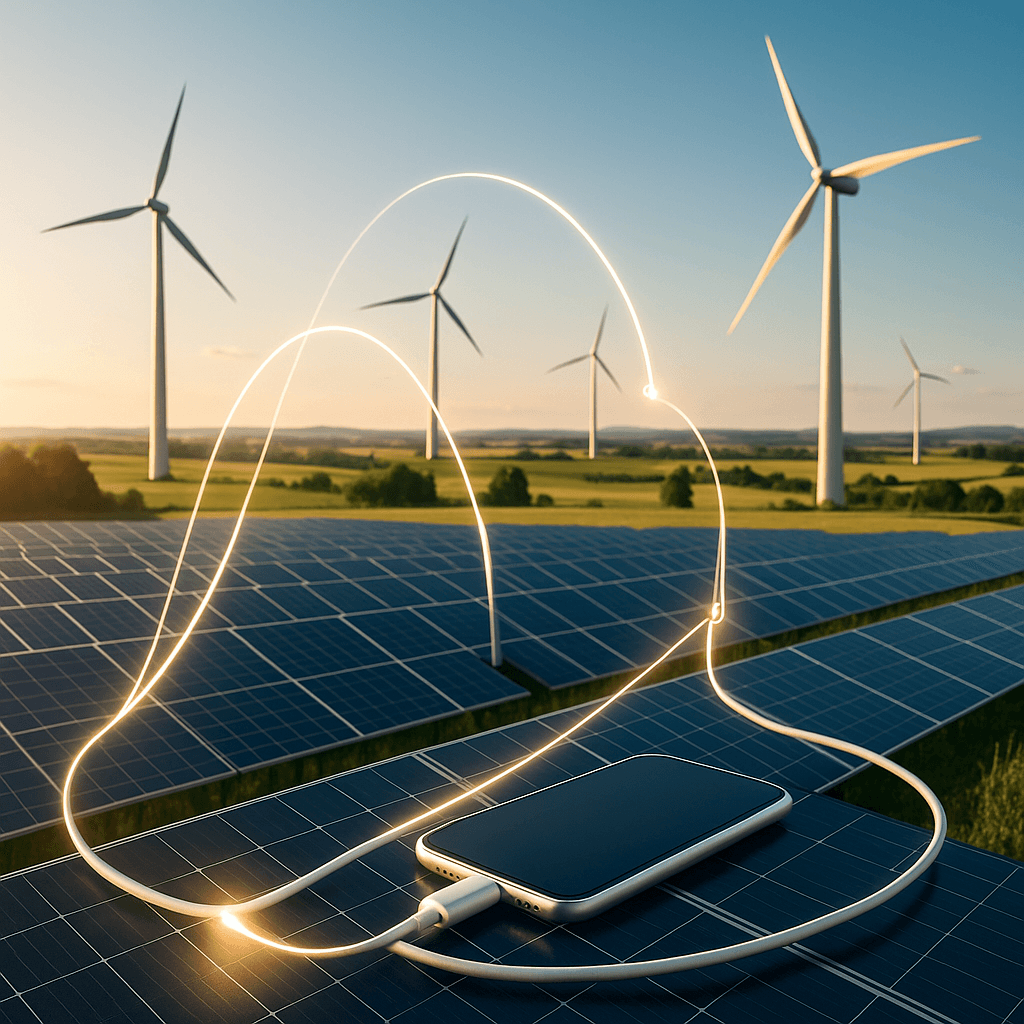Apple just made one of its biggest renewable energy moves of the year, but you might have missed it. The company quietly signed contracts for 650 megawatts of wind and solar power across Europe while announcing a $150 million investment to help Chinese suppliers go green - marking a strategic push to offset the energy consumed by customers charging their devices.
Apple is making moves in the renewable energy space that reveal just how serious the company is about its climate commitments - and how carefully it's navigating political headwinds at home.
The Cupertino giant announced Tuesday it has locked in contracts for 650 megawatts of renewable power across Europe, spanning wind and solar projects from Greece to Romania. But here's what makes this deal particularly interesting: a significant chunk of that power isn't going to Apple's own operations. Instead, it's designed to offset the energy customers use when they plug in their iPhones, MacBooks, and Apple Watches at home.
That customer charging habit represents nearly one-third of Apple's entire carbon footprint, according to the company's own calculations. It's a massive environmental liability that most tech companies simply ignore, but Apple is taking direct responsibility for electrons flowing through millions of wall outlets across Europe.
The renewable portfolio reads like a European energy tour: 110 megawatts each from solar farms in Greece and Latvia, 131 megawatts of Spanish solar, 40 megawatts from Polish panels, 99 megawatts of Romanian wind, and a mixed 129-megawatt solar-wind project in Italy. These aren't just paper contracts - many projects are already operational or coming online soon.
But Apple's energy ambitions extend far beyond European borders. The company announced it's putting $150 million on the table in China to help suppliers make the renewable transition. This isn't charity - it's strategic supply chain management. Apple already sources more than 90% of its Chinese manufacturing from renewable power, but getting suppliers fully green is the final piece of the puzzle.
What's arguably most revealing about these announcements is where they appeared - and where they didn't. Apple pushed out the news through its regional European and Asian press sites, but kept it off the main U.S. press feed. Industry watchers suggest this reflects the company's careful dance around domestic political sensitivities, particularly given the current administration's complicated relationship with renewable energy initiatives.
This pattern puts in interesting company. has been on an absolute solar buying spree this year, adding over 2 gigawatts of capacity, while has signed deals for 1.5 gigawatts. The tech sector's renewable appetite shows no signs of slowing, driven by both climate commitments and hard economics.












